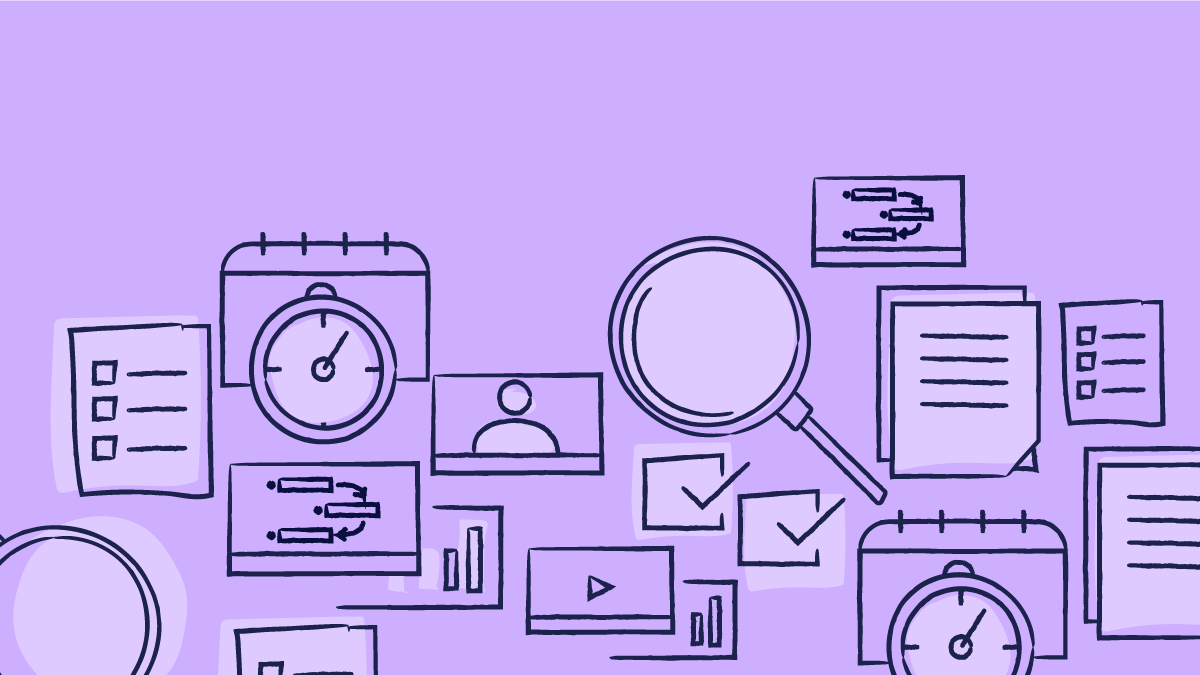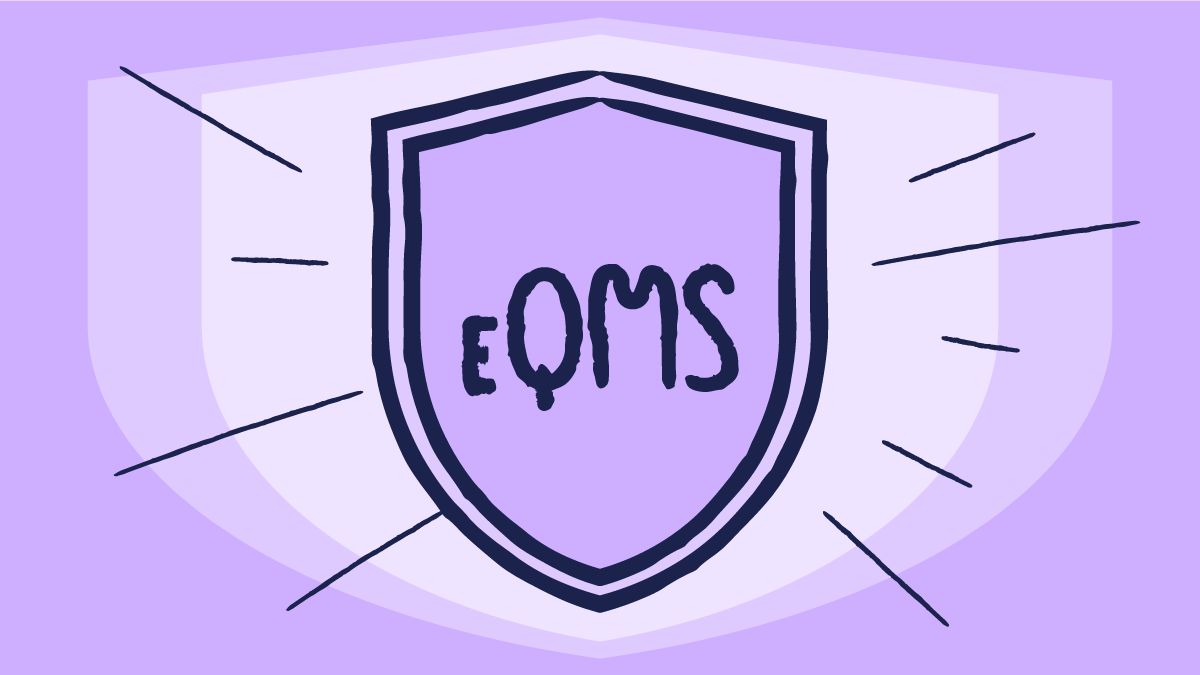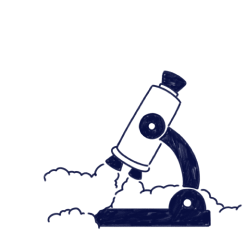
Let's be honest, quality management in life sciences can be a real headache. The amount of paperwork, the complexity of the regulations, and the constant pressure of audits is tremendous. It's enough to make anyone's head spin.
That's where eQMS, or electronic Quality Management Systems, come in. They're supposed to be the solution, right? A way to digitize everything, streamline processes, and finally get a handle on compliance.
But here's the thing: just buying any eQMS isn't going to magically solve your problems. It's like buying a fancy new car when you don't even know how to drive. You need to figure out what you actually need from an eQMS before you start shopping.
And that's exactly what a needs assessment is all about.
It serves as a checklist for your pre-purchase. What are your biggest pain points? What regulations do you have to meet? What kind of workflows are you trying to improve?
This post is your guide to figuring all that out. We'll walk you through the essential steps of an eQMS needs assessment, talk about the must-have features in quality management software, and give you some practical tips for making the whole process less stressful. We'll also cover the tricky stuff, like staying compliant in the life sciences world.
So, if you're ready to take control of your quality management and find the eQMS that's actually right for you, keep reading.
Overview of an eQMS
An eQMS is a software platform that automates key quality processes, especially effective within regulated industries like pharmaceuticals, medical devices, and biotechnology.
It allows organizations to create, store, retrieve, and archive all quality-related documents electronically. It also centralizes quality-related functions, including training management, audit tracking, investigations, CAPA management, and KPIs, thereby improving operational efficiency and ensuring regulatory compliance.
What is a software needs assessment for an eQMS?
Managing quality in life sciences is no easy task. It's more like navigating a complex obstacle course blindfolded, with regulatory auditors breathing down your neck. And in the midst of all that, you're supposed to choose an eQMS, a system that's supposed to make your life easier, not harder. It is a strategic decision that can have a significant impact on the performance of your organization.
But let's be real, picking the right eQMS can feel like another obstacle in itself. That's where the software needs assessment comes in; it's your compass and map for navigating this tricky terrain.
A software needs assessment for an eQMS is a systematic process of identifying, documenting, and prioritizing an organization's requirements for an electronic quality management system.
It's essentially about understanding your specific quality challenges and defining precisely what you need from a software solution to address them. We're not talking about generic feature lists here; we're talking about aligning the eQMS with your organization's unique workflows, identifying bottlenecks, inefficiencies, areas for improvement, regulatory requirements, and strategic goals.
Think of it as the first step before investing in any software. You wouldn't buy a house without checking out the foundation, right? It's more than just asking people what they want; it's about digging deep and uncovering the real needs.
What is the difference between user needs and user requirement specifications (URS)?
.png?width=1560&height=1468&name=User-needs-VS-user-requirement-specifications-(URS).png)
The difference between User Needs and User Requirements Specifications (URS) lies in their level of specificity and purpose in software development.
- User needs define the high-level goals or problems that users want the software to address. They focus on the desired outcome rather than the specific functionality. For example, a quality manager may need an efficient way to track document approvals in an eQMS.
- User requirements specifications translate these user needs into clear, actionable specifications that guide software development. They define what the software must do to fulfill the need. For instance, a requirement might state: The system shall provide an automated workflow for document approvals, including electronic signatures and real-time status updates.
In short, user needs define the "why," while user requirements define the "how."
Key benefits of conducting a needs assessment before selecting an eQMS
A thorough needs assessment before selecting an eQMS offers a multitude of benefits, setting the stage for a successful implementation and maximizing the return on your investment. A well-executed needs assessment helps you:
- Avoid costly mistakes and ensure system fit
- Enhanced compliance
- Improved integration with existing systems
- Optimized system configuration
- Improved user adoption
- Improved stakeholder and C-suite buy-in
- Streamlined implementation
- Improved resource allocation
- Maximized ROI
- Improved vendor communication
Step-by-step guide to conducting an eQMS software needs assessment
Step 1: Identify the scope, business objectives and compliance requirements
This initial phase lays the foundation for a successful eQMS implementation by clearly defining the project's boundaries, goals, and regulatory landscape. It involves three key activities:
Scope, goals and objectives
First of all, determine the overall scope of the eQMS implementation. Will it cover all quality processes (document control, CAPAs, change control, audits, training, etc.)? Or will you take a phased approach, starting with a specific area you need to improve first, such as document control? The scope defines what the eQMS will cover.
Hand-in-hand with scope comes your goals. These are the overall desired outcomes you hope to achieve with the eQMS. They are generally broader and less specific than objectives. Common goals include improved compliance, streamlined processes, reduced errors, enhanced efficiency, and better data integrity. Goals define why you are implementing the eQMS.
To effectively assess your business goals in preparation for an eQMS needs assessment, a multi-faceted approach is essential:
- Critically analyze your strategic plan to ensure the eQMS implementation directly supports your long-term vision and objectives.
- Begin by conducting a SWOT analysis to identify your organization's strengths, weaknesses, opportunities, and threats, providing a broad overview of your current position.
- Use your Quality Process Review (QPR) to identify existing challenges and areas for improvement in your quality management system.
- Review key performance indicators (KPIs) to identify the metrics that matter most to your business and how the eQMS can track and report on them.
- Analyze customer feedback to pinpoint areas where quality improvements can enhance satisfaction.
Simultaneously, establish clear, measurable objectives for the eQMS. These are the specific, measurable, achievable, relevant, and time-bound (SMART) steps you will take to reach your goals.
They are concrete and quantifiable. For example, instead of a goal of "improved compliance," an objective might be "Reduce the number of major audit findings by 20% within one year of eQMS implementation." Objectives define how you will achieve your goals.
Compliance and requirements analysis
Before selecting an eQMS, a thorough analysis of applicable regulations and standards is critical. This includes regulations such as FDA 21 CFR Part 11, FDA 21 CFR Part 210, FDA 21 CFR Part 211, standards such as ISO 13485, and guidelines such as ICH Q10, EU Annex 11, and GxP. Your goal is to pinpoint the specific compliance requirements that apply to your organization.
Make sure your eQMS incorporates these regulatory and business requirements. This step ensures the chosen system isn't just a nice-to-have, but a true solution that addresses your unique needs. It clarifies exactly how the eQMS must function to meet both business and regulatory demands.
By focusing on requirements like audit trails, electronic signatures, and data security from the outset, you'll ensure the system supports compliance and operational efficiency by design.
Stakeholder Identification and engagement
Before you even think about software, you need to talk to people and get their input. And I mean everyone who will touch the eQMS. Think QA/QC, IT, regulatory affairs, manufacturing, management, the whole crew.
Identify who will collaborate on one-on-one chats and workshops. Find out what their current headaches are, what they wish the new system could do, and what their overall expectations are. This isn't just about gathering information; it's about getting everyone involved in the process.
When people feel heard, they're much more likely to support the change. This step makes it crystal clear who's involved and what they need from the eQMS.
Scilife Tip: Ask yourself:
- Are we thinking beyond regulatory checkboxes to build a system that truly enhances quality culture?
Does our scope align with business priorities, or are we overcomplicating the rollout?
Are our stakeholders engaged enough to ensure adoption, or will they resist the change?
Step 2: Map your needs: Analyzing current quality processes
We now turn our attention to a more formal analysis of our existing quality management processes after gathering input from step 1. This step 2 involves a thorough evaluation of current quality practices, identifying both strengths and weaknesses, with the aim of pinpointing areas for improvement. It can be viewed as a meticulous audit of our current quality system.
Capturing stakeholder requirements
Our first task is to capture all stakeholder requirements. These requirements, as we've discussed, will serve as the foundation upon which the eQMS's functionality and usability are built. They define the "what" and the "how" of the system, ensuring it aligns perfectly with the needs of those who will use it.
Identifying operational challenges
Next, we must confront the operational realities of our current quality management practices:
- What challenges do we face daily?
- Is data accuracy a constant concern?
- Are manual processes creating bottlenecks and increasing the risk of errors?
- Is visibility into key quality metrics limited, hindering proactive decision-making?
- Is communication within the quality team, or between quality and other departments, less efficient than it could be?
We must identify these friction areas with honesty. It is in these challenges that an eQMS truly reveals its potential. This analysis will directly inform the selection and configuration of specific eQMS processes or modules designed to address these issues.
Categorizing requirements
To bring structure to this process, we shall categorize these identified needs into categories, including operational, functional, technical, and regulatory.
- Operational requirements address how the system works in practice: its usability, reporting capabilities, integration with existing systems, and so forth.
- Functional requirements define what the system does: the core functionalities it must possess, such as document control, CAPA management, or audit tracking.
- Technical requirements specify the underlying technology required to support the eQMS: hardware specifications, software compatibility, network infrastructure, and the like.
- Regulatory requirements ensure the system adheres to all relevant regulatory frameworks, such as FDA 21 CFR Part 11, ISO 13485, and other applicable standards.
There are other categories: environmental, performance, security, maintenance, etc.
Cloud vs on-premise considerations
Choosing between cloud-based and on-premises eQMS deployment is a crucial decision. Both have advantages and disadvantages, impacting cost, scalability, security, and IT needs. Consider factors such as accessibility, cost, scalability, security, and IT resources:
- Accessibility: Cloud-based systems offer greater accessibility. Users can typically access the eQMS from anywhere with an internet connection. Many possibilities open up: remote teams, collaboration, and location freedom. On-premises systems may require users to be on the company network.
- Cost: Cloud eQMS systems typically have lower upfront costs (just subscription fees) covering server space, maintenance, and upgrades. On-premises solutions require a larger initial investment in hardware and software.
- Scalability: Cloud solutions scale easily, allowing you to adjust resources as needed.
- Security: Both cloud and on-premises solutions can be secure, but the responsibility for security management differs. Cloud is a service-based model where you are letting an expert vendor take care of your risks and costs associated with the QMS software. This means that you will own your QMS data but the data security, compliance, and audit capabilities will be outsourced to the cloud provider.
- IT Resources: Cloud solutions typically require less internal IT support, while on-premises solutions demand more dedicated IT resources.
Scilife Tip: Ask yourself:
- Where do our current quality processes create the most friction, and what would "seamless" look like?
Will the solution address the real pain points, or just digitize inefficiencies?
Which compliance risks are hidden in our current system, and how can the eQMS proactively mitigate them?
Step 3: Perform the gap analysis
Now comes the crucial moment: the gap analysis. This is where we hold a mirror to our current processes and compare them, point by point, against the requirements we have so diligently gathered.
We meticulously examine existing documentation, SOPs, work instructions, forms, and records of all kinds, seeking areas where improvement or automation is possible. This gap analysis will illuminate the precise points where our current system falls short and, consequently, where an eQMS can make the most significant impact.
We identify which processes are manual and which would be best automated. We also consider the question of scalability. Will this eQMS be able to support our organization's growth, including potential global expansion or the addition of new sites?
Conducting a requirement analysis
With the insights gained from the gap analysis, we can conduct a more granular requirements analysis. This may involve employing techniques such as, yes, another gap analysis (but at a more detailed level) and constructing data flow diagrams to visualize the intricate interplay between different system components. The objective here is to ensure that every requirement is measurable, actionable, and traceable. This rigor is essential for building a robust eQMS that truly aligns with our organizational goals.
Documenting requirements
Finally, we must document everything. This documentation will serve as our guiding star throughout the eQMS implementation process. It will include a comprehensive checklist of all requirements (functional, operational, technical, and compliance), prioritized according to their importance and impact on the organization.
A requirements traceability matrix is a great tool for this, it helps us keep track of where each requirement came from, what category it falls into, and how important it is. And of course, we need to prioritize – what's a must-have, and what's just a nice-to-have? This document, this treasure trove of information, is what we'll use to choose the right eQMS. It's our roadmap to quality management success.
Review and get feedback
You've done the hard work of analyzing processes and documenting requirements. Now, it's time to get a second (and third, and fourth) opinion. Share the documented requirements traceability matrix with all the stakeholders you identified earlier.
This isn't just a formality. It's your chance to catch anything you might have missed, ensure everyone's needs are accurately represented, and confirm that the proposed requirements truly reflect the reality of their day-to-day work. Think of it as a final quality check before moving forward. Their feedback is invaluable for refining the requirements and ensuring the eQMS ultimately meets everyone's needs and expectations.
Update the checklist and finalize the document.
Scilife Tip: Ask yourself:
- If we automate a flawed process, are we improving efficiency or just scaling inefficiency faster?
Are we solving surface-level inefficiencies, or uncovering deeper systemic issues that impact quality?
Have we pressure-tested our assumptions with frontline users, or are we designing from an executive-only perspective?
Common mistakes to avoid in an eQMS needs assessment
It is easy to stumble in the needs assessment step if you're not careful. To help you navigate this phase, we will explore some common pitfalls that can derail your eQMS needs assessment process, and how to avoid them.

Failing to engage stakeholders
A needs assessment is not a solo project. It is important to involve all relevant stakeholders. If you only talk to a few people or miss key perspectives, you will end up with an eQMS that does not fully address everyone's needs, leading to resistance, workarounds, and ultimately, a less effective system.
Do not assume that you know what everyone needs - ask them! Different teams have different workflows and priorities. Ignoring their input can result in a system that works well for one department but creates headaches for another.
Focusing only on current pain points
The purpose of a needs assessment should not only address current challenges, but also anticipate future challenges.
Take into consideration future growth, changes in regulations, and evolving business needs. If you only focus on fixing today's problems, you might choose an eQMS that quickly becomes outdated or can't scale with your organization. Scilife tips to get the most out of your eQMS.
A best practice is to define clear, SMART quality objectives and Key Performance Indicators (KPIs). This ensures the eQMS aligns with your organization's strategic goals.
Underestimating the importance of user-friendliness
No matter how fancy your eQMS is, you won't use it if no one uses it. The User Experience (UX) is everything.
If the system is difficult to navigate, unintuitive, or requires extensive training, people will revert to old habits or find workarounds. Involve users in the needs assessment process to understand their preferences and ensure the chosen eQMS is user-friendly and promotes adoption.
Neglecting integration with existing systems
An eQMS rarely exists in isolation. It needs to integrate seamlessly with other systems, such as your ERP, LIMS, or other quality-related software. Failing to consider integration requirements during the needs assessment can lead to data silos, manual data entry (and the associated errors), and a fragmented quality management landscape.
Map out your existing systems and identify the necessary integrations early on. Think about how data will flow between systems. Will the eQMS be able to communicate effectively with your other software?
Skipping the gap analysis
Successful needs assessments begin with a gap analysis. It's not enough to simply list your requirements; you need to compare them against your current capabilities.
A gap analysis reveals where your existing quality management system falls short and highlights the specific areas where an eQMS can add value.
Without this analysis, you're essentially making guesses about what you need, which increases the risk of choosing the wrong system or missing critical functionalities.
Key takeaways:
- The first non-avoidable step in selecting the right eQMS is to conduct a comprehensive needs assessment.
- Engage all stakeholders and thoroughly analyze current processes, including a gap analysis, to understand your true needs.
- Consider both current challenges and future needs, including scalability, integration, and compliance.
- Prioritize user experience and ensure the chosen system is user-friendly to drive adoption.
- Don't skip the review process. Stakeholder feedback is essential for refining requirements and ensuring success.
Conclusion
Implementing an eQMS is a significant project, and a needs assessment is the key to success. This guide has walked you through the essential steps, from defining scope and objectives to analyzing processes and gathering stakeholder feedback.
Remember, choosing the right eQMS is about more than just features; it's about aligning the system with your specific needs and goals.
Need help selecting the right eQMS? Contact us for expert guidance!








